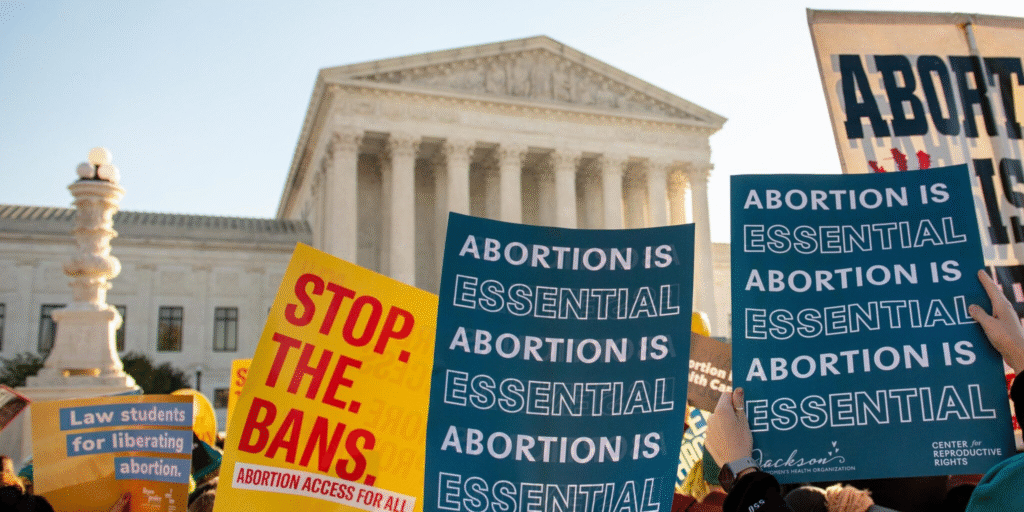Recent News: Abortion Clinics Closing Despite Legal Protections
Abortion clinics are shutting down across the United States, even in states where abortion remains legal. This trend, reported in early 2025, has raised concerns about access to reproductive health care.

A combination of funding cuts, legal battles, and social pressures is driving these closures. Data from the Guttmacher Institute shows that 63 clinics stopped providing abortions between 2022 and 2024, with more closures expected. This affects women’s ability to access care, even in states with strong abortion protections.
Background: The Post-Roe Landscape
The 2022 Supreme Court decision in Dobbs v. Jackson Women’s Health Organization overturned Roe v. Wade, ending federal abortion protections. States gained the power to set their own laws. Some, like California and Maryland, strengthened abortion rights.
Others, like Alabama and Texas, imposed near-total bans. Clinics in ban states closed rapidly, but even in legal states, providers face challenges. The Guttmacher Institute reports that 14 states have total bans, while 27 allow abortions with varying restrictions. Clinics in legal states are strained by increased demand from out-of-state patients.
Why Closures Are Happening
Several factors are forcing clinics to close, even where abortion is legal. Funding is a major issue. In March 2025, posts on X highlighted Planned Parenthood closures in New York, Illinois, and Utah due to federal Title X funding cuts under the Trump administration.
These cuts target programs tied to diversity, equity, and inclusion (DEI) initiatives, which many clinics rely on. The National Abortion Federation notes that 40% of clinics face financial strain from reduced grants and rising operational costs.
Legal battles also play a role. In Wyoming, Wellspring Health Access, the state’s only abortion clinic, halted services in April 2025 due to new licensing requirements.
These laws, called “targeted restrictions on abortion providers” (TRAP), impose strict rules, like mandating hospital admitting privileges. A judge suspended these rules, allowing the clinic to reopen, but similar regulations threaten clinics elsewhere. The Center for Reproductive Rights says TRAP laws affect 15 states, even where abortion is legal.
Social pressures add to the problem. Anti-abortion protests create hostile environments. In Bournemouth, UK, a clinic reported 500 harassment incidents before a 2022 buffer zone law. In the U.S., the Thomas More Society has challenged clinic protection laws, weakening safety measures in states like Missouri. Staff burnout is another factor. Providers face threats and emotional stress, leading some to leave the field. A 2024 study in Chest journal found doctors in ban states fear legal repercussions, reducing their willingness to offer abortion-related care.
The Scale of the Crisis
The numbers tell a stark story. The Guttmacher Institute reports that 1 in 5 abortion clinics in legal states reduced services or closed since 2022. In Vancouver, Canada, the Elizabeth Bagshaw Clinic closed in March 2025 after 35 years due to funding uncertainty, straining British Columbia’s health system.
In Missouri, Planned Parenthood resumed surgical abortions in 2025 but cannot offer medication abortions due to state restrictions. The National Abortion Federation estimates that 30% of clinics in legal states saw a 50% increase in out-of-state patients, overwhelming capacity. Travel costs for patients average $1,000, per a 2024 Planned Parenthood report, making access harder for low-income women.
What’s Next for Abortion Access
Closures are reshaping reproductive health care. Advocates warn that without action, access will worsen. States like Maryland are fighting back. In March 2025, Maryland passed a bill to fund abortion services with $25 million from insurance surcharges.
California streamlined permits for providers after a Beverly Hills clinic was blocked in 2023. But federal funding cuts and legal challenges loom large. Reproductive rights groups are pushing for national protections, but with a divided Congress, progress is uncertain. For now, women face longer waits, higher costs, and fewer options, even where abortion remains legal.


 Canadians Pull Back from U.S. Trips Amid Border Backlash
Canadians Pull Back from U.S. Trips Amid Border Backlash  US vetoes UN Security Council resolution on Gaza ceasefire
US vetoes UN Security Council resolution on Gaza ceasefire  South Korea-U.S. nuclear agreement revision gains consensus
South Korea-U.S. nuclear agreement revision gains consensus  Russia and China join forces against the United States
Russia and China join forces against the United States  Digital Taxes Put U.S –EU Trade Talks Under Heavy Strain
Digital Taxes Put U.S –EU Trade Talks Under Heavy Strain  White House approves the sale of 3,350 missiles to Ukraine
White House approves the sale of 3,350 missiles to Ukraine